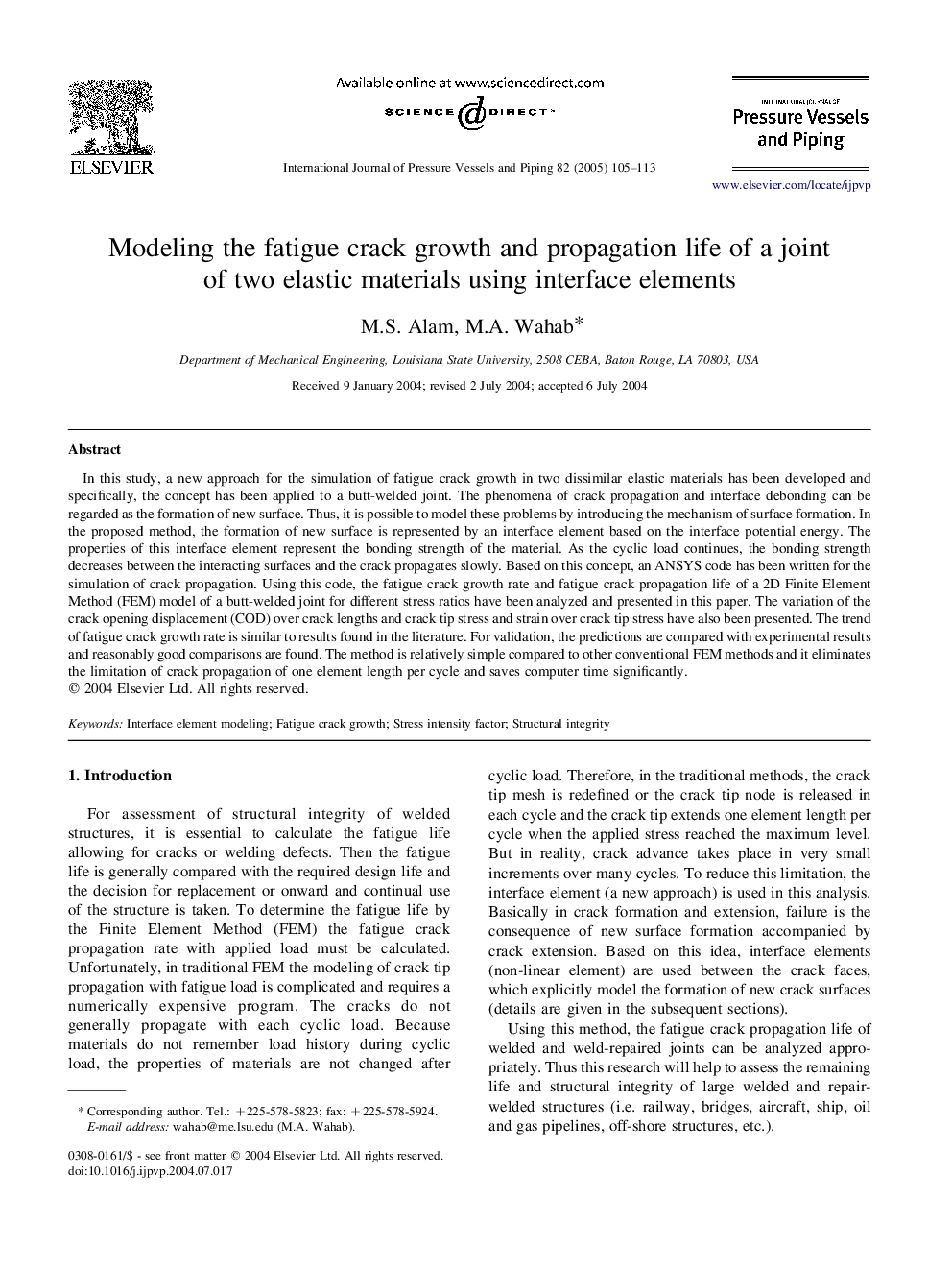| Article ID | Journal | Published Year | Pages | File Type |
|---|---|---|---|---|
| 9707665 | International Journal of Pressure Vessels and Piping | 2005 | 9 Pages |
Abstract
In this study, a new approach for the simulation of fatigue crack growth in two dissimilar elastic materials has been developed and specifically, the concept has been applied to a butt-welded joint. The phenomena of crack propagation and interface debonding can be regarded as the formation of new surface. Thus, it is possible to model these problems by introducing the mechanism of surface formation. In the proposed method, the formation of new surface is represented by an interface element based on the interface potential energy. The properties of this interface element represent the bonding strength of the material. As the cyclic load continues, the bonding strength decreases between the interacting surfaces and the crack propagates slowly. Based on this concept, an ANSYS code has been written for the simulation of crack propagation. Using this code, the fatigue crack growth rate and fatigue crack propagation life of a 2D Finite Element Method (FEM) model of a butt-welded joint for different stress ratios have been analyzed and presented in this paper. The variation of the crack opening displacement (COD) over crack lengths and crack tip stress and strain over crack tip stress have also been presented. The trend of fatigue crack growth rate is similar to results found in the literature. For validation, the predictions are compared with experimental results and reasonably good comparisons are found. The method is relatively simple compared to other conventional FEM methods and it eliminates the limitation of crack propagation of one element length per cycle and saves computer time significantly.
Related Topics
Physical Sciences and Engineering
Engineering
Mechanical Engineering
Authors
M.S. Alam, M.A. Wahab,
